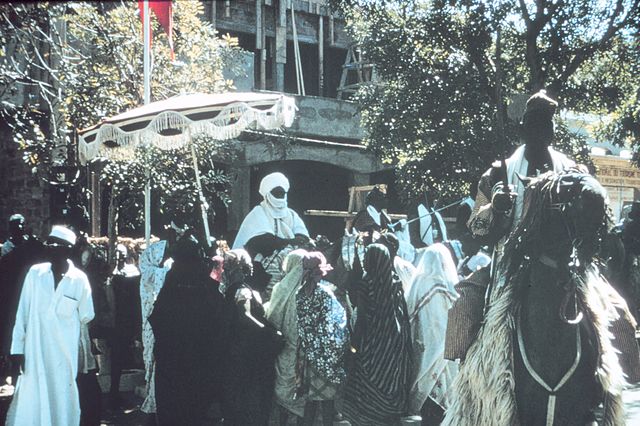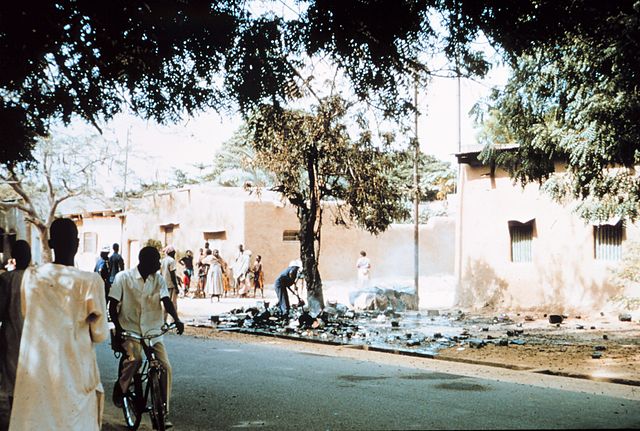Chadian Civil War (1965–1979)
The Chadian Civil War of 1965–1979 was waged by several rebel factions against two Chadian governments. The initial rebellion erupted in opposition to Chadian President François Tombalbaye, whose regime was marked by authoritarianism, extreme corruption, and favoritism. In 1975 Tombalbaye was murdered by his own army, and a military government headed by Félix Malloum emerged and continued the war against the insurgents. Following foreign interventions by Libya and France, the fracturing of the rebels into rival factions, and an escalation of the fighting, Malloum stepped down in March 1979. This paved the way for a new national government, known as "Transitional Government of National Unity" (GUNT).
French Navy helicopter and French paratroopers during a 1971 operation in Chad
Chadian notables in the 1960s. President François Tombalbaye undermined traditional local leaders, causing resentment that contributed to the civil war.
President François Tombalbaye with military officers during a parade in 1970
In 1979, N'Djamena (pictured in the 1960s) became the site of heavy fighting.
François Tombalbaye, also known as N'Garta Tombalbaye, was a Chadian politician who served as the first President of Chad from the country's independence in 1960 until his overthrow in 1975. A dictatorial leader, his divisive policies as president led to factional conflict and a pattern of authoritarian leadership and political instability that are still relevant in Chad today.
François Tombalbaye during a visit to Israel, October 1959.
President Tombalbaye marching in a parade celebrating the tenth anniversary of independence.





